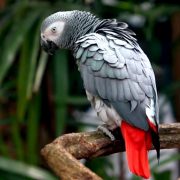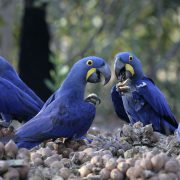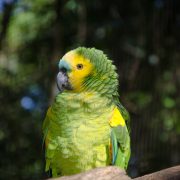African Grey Parrot

The Grey Parrot (Psittacus erithacus), also known as the Congo Grey Parrot or African Grey Parrot, is an Old World Parrot in the family Psittacidae. The Timneh parrot (Psittacus timneh) was earlier treated as conspecific but has since been split as a full species.
The grey parrot is native to equatorial Africa, including Angola, Cameroon, Congo, Ivory Coast, Ghana, Kenya, and Uganda. The species is found inside a range from Kenya to the eastern part of the Ivory Coast. Current estimates for the global population are uncertain and range from 0.63 to 13 million birds. Populations are decreasing worldwide. The species seems to favor dense forests, but can also be found at forest edges and in more open vegetation types (gallery and savanna forests).






 Blue Fronted Amazon parrots are among the most common birds kept as pets, and despite the name are a bright lime green. Also known as the Turquoise Fronted Amazon or simply the Blue Fronted Parrot, these birds are normally between 15 and 17 inches long from the beak to the tip of the tail feathers.
Blue Fronted Amazon parrots are among the most common birds kept as pets, and despite the name are a bright lime green. Also known as the Turquoise Fronted Amazon or simply the Blue Fronted Parrot, these birds are normally between 15 and 17 inches long from the beak to the tip of the tail feathers.